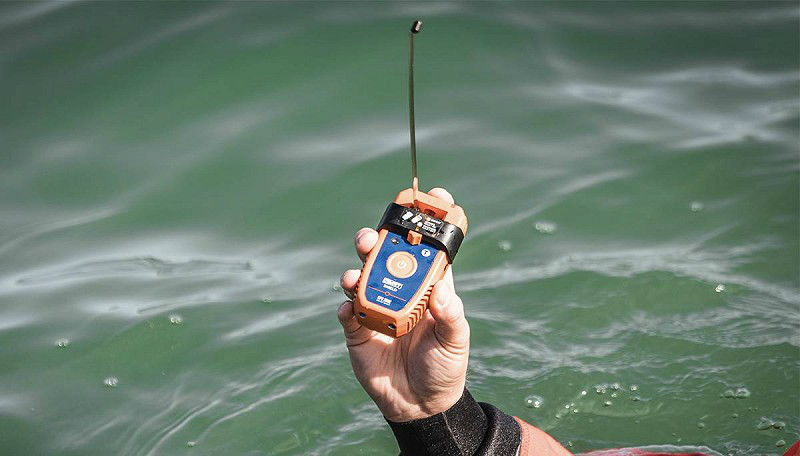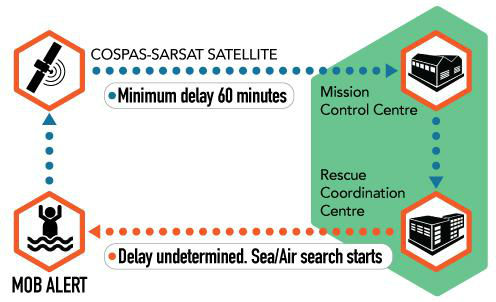What is 406MHz?

The inception of the COSPAS-SARSAT system in 1982 led to the creation and utilisation of the 406MHz PLBs, in the early 2000s. In the marine industry, 406MHz devices such as EPIRB’S and ELT’s have traditionally been used as a stand-alone solution for platforms such as aircrafts, vessels or platforms.
Until recently, this system has typically been excluded from usage on individuals as it can only be manually activated, does not alert the nearest potential rescue vessel, i.e. the vessel you have just fallen off, has a location accuracy of +/- 100m and has an extend response time of up to 60 minutes, due to the way the system operates.

Once activated, the signal is detected by a satellite and sent to a Mission Control Centre (MCC) where it is decoded and forwarded to the nearest Rescue Coordination Centre (RCC). The RCC will then attempt to contact the registered details, which were provided upon purchase, to verify if it is a real MOB distress situation.
On average, worldwide, this verification can take up to 60 minutes, as 99% of 406MHz activations are false, delaying the dispatch of the closest Search and Rescue forces. It is only once the distress alert has been verified at the RCC that a rescue plan is formulated, and rescue assets are dispatched.
Important note: the 60-minute delay does not include the time for the rescue vessel to travel to the incident site.
Want to find out more about 406MHz?
If you would like to find out more about 406MHz and it’s capabilities, then don’t hesitate to get in touch with us today via info@mrtsos.com.
02/05/2020
Contact Us
Find Us
Global Headquarters
Wescom Group,
Unit J1, Springfield Way,
Anlaby, HU10 6RJ

